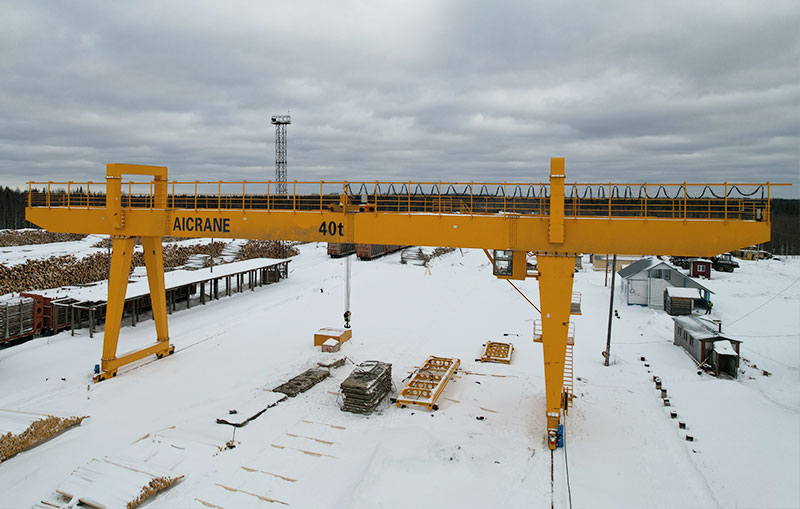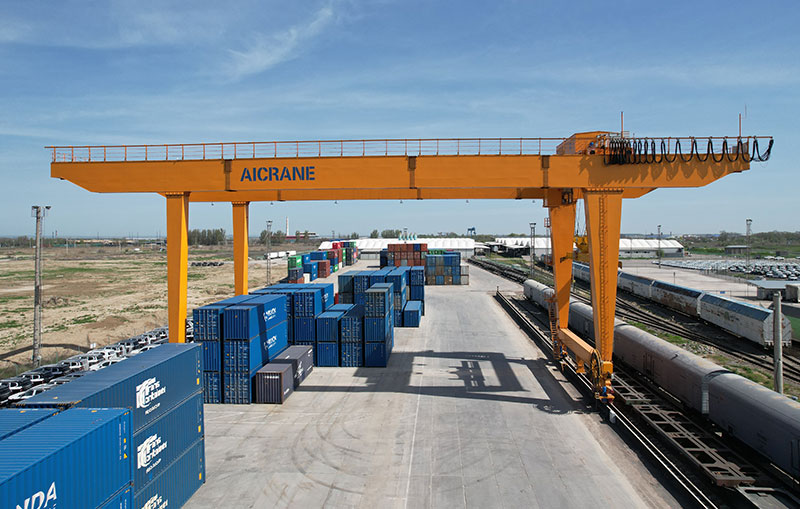Gantry cranes are among the most versatile lifting solutions in industries ranging from manufacturing and logistics to shipbuilding and construction. One of the most important specifications to determine before purchasing a gantry crane is its load capacity – the maximum weight it can safely lift. While capacity directly determines the crane’s operational capabilities, it also plays a major role in its overall price.
Understanding how gantry crane capacity affects pricing will help businesses make informed purchasing decisions that balance performance needs with budget considerations.

1. What Does “Gantry Crane Capacity” Mean?
Gantry crane capacity refers to the maximum load a crane can safely lift without compromising its structural integrity or operational safety. Capacities can range from light-duty 1-15 ton gantry cranes for small warehouses to heavy-duty models exceeding 500 tons for shipyards or infrastructure projects.
The capacity is not just a single figure; it represents the crane’s design, materials, motor strength, hoisting system, and compliance with safety factors. The higher the capacity, the more robust and technically advanced the crane needs to be – factors that inevitably impact the gantry crane price.
2. The Direct Link Between Capacity and Cost
The general rule in gantry crane pricing is: the higher the capacity, the higher the cost. This correlation exists because increasing capacity requires:
-
Stronger structural materials (e.g., thicker steel sections, reinforced beams).
-
More powerful hoisting equipment (larger motors, heavy-duty gearboxes, stronger ropes or chains).
-
Enhanced safety systems (overload protection, advanced braking systems).
-
Precision engineering and compliance testing for high-load applications.
For example, a single girder 10 ton gantry crane might cost significantly less than a 100-ton double girder crane, even if their spans and lifting heights are similar. The difference lies in the scale of components and the engineering needed to handle the higher load safely.
3. Factors That Amplify the Price Difference
While capacity is the primary driver, it interacts with other specifications to shape the final cost.
a) Crane Type
-
Single girder gantry cranes are generally more cost-effective for lower capacities.
-
Double girder cranes are preferred for medium to heavy loads, adding to both cost and lifting stability.
-
Specialized gantry cranes – such as rubber tyred mobile gantry cranes or rail-mounted container gantry cranes – can be significantly more expensive in high capacities due to specialized engineering.

b) Span and Lifting Height
A 50 ton crane with a short span might cost less than a 30 ton gantry crane with a long span and high lifting height. Larger dimensions require more materials, stronger structures, and sometimes heavier counterbalancing.
c) Work Duty Classification
Cranes designed for continuous, heavy-duty operations (A5, A6, or A7 duty classes) need more robust components, which adds cost compared to similar-capacity cranes for light or moderate duty.
d) Customization Needs
High-capacity cranes often require custom-engineered solutions – special hoists, extended runways, weatherproofing, or anti-sway systems – which can increase price by 10–30% or more.
4. Price Ranges by Capacity
While exact prices vary by manufacturer, region, and features, here’s a generalized cost comparison based on gantry crane capacity (for illustrative purposes):
| Capacity Range | Typical Price Range* (USD) | Common Applications |
|---|---|---|
| 1–10 Ton | $10,000 – $40,000 | Warehouses, workshops, maintenance |
| 10–50 Ton | $40,000 – $120,000 | Manufacturing plants, steel handling |
| 50–150 Ton | $120,000 – $350,000 | Precast concrete, shipyard work |
| 150–500 Ton | $350,000 – $1,000,000+ | Bridge construction, heavy ship lifting |
*Prices are indicative and can vary widely based on specifications and region.
5. Why Higher Capacity Doesn’t Always Mean Better Value
Some buyers make the mistake of over-specifying capacity – choosing a 100-ton crane for tasks that rarely exceed 50 tons. While it may seem like a safe choice, oversizing leads to unnecessary capital investment and possibly higher operating costs (energy consumption, maintenance, and spare parts).
Example:
-
A steel fabrication shop with a maximum load of 20 tons could invest in a 25-ton crane for flexibility.
-
Buying a 50-ton crane would increase costs without delivering proportional operational benefits.
6. The Role of Technology in Cost Efficiency
Modern crane engineering is helping reduce the price gap between capacities through advanced design and manufacturing techniques:
-
High-strength low-alloy steel allows lighter yet stronger structures.
-
Variable frequency drives (VFD) improve motor efficiency, reducing power requirements.
-
Modular designs simplify scaling up capacity without a complete redesign.
While these innovations can keep prices competitive, they still scale upward with capacity.
7. Long-Term Costs of Higher Capacity Cranes
Capacity influences more than just the initial purchase price – it also affects operational and lifecycle costs:
-
Energy consumption: Higher-capacity cranes typically require more powerful motors, consuming more electricity.
-
Maintenance: Larger mechanical parts and heavier-duty components may require more frequent inspections and replacements.
-
Insurance and compliance: Heavier lifting equipment may carry higher regulatory and safety compliance costs.
When budgeting, businesses should calculate total cost of ownership (TCO) rather than focusing solely on the initial price.
8. Strategies for Choosing the Right Capacity at the Right Price
To strike the right balance between cost and performance:
-
Assess current and future lifting needs – Account for possible capacity increases but avoid extreme overestimation.
-
Consult with experienced manufacturers – They can help size the crane correctly based on your load types, lifting frequency, and operational environment.
-
Consider modular upgrades – Some cranes can be upgraded in capacity later by changing hoists or structural reinforcements.
-
Evaluate ROI – Higher capacity may reduce the need for multiple cranes, potentially justifying the higher upfront cost.
9. Real-World Example
A precast concrete company needed a crane to lift 40-ton beams. Initially, they considered a 60-ton gantry crane for “extra safety.” After a load analysis, the manufacturer recommended a 45-ton double girder gantry crane with a high-duty classification, offering enough margin while reducing the cost by nearly 20%. The savings allowed the company to invest in an automated anti-sway system, improving operational safety without overspending on unnecessary capacity.
Conclusion
Gantry crane capacity is one of the most significant factors influencing price. While higher capacity enables more versatile and heavy-duty lifting, it also increases costs due to stronger materials, more powerful components, and advanced safety measures. Businesses must carefully assess their actual and future lifting requirements to avoid overspending while ensuring operational safety and efficiency.
By working with reputable crane manufacturers and considering total ownership costs, buyers can choose the optimal capacity that delivers both performance and value – ensuring their investment pays off over the long term.
